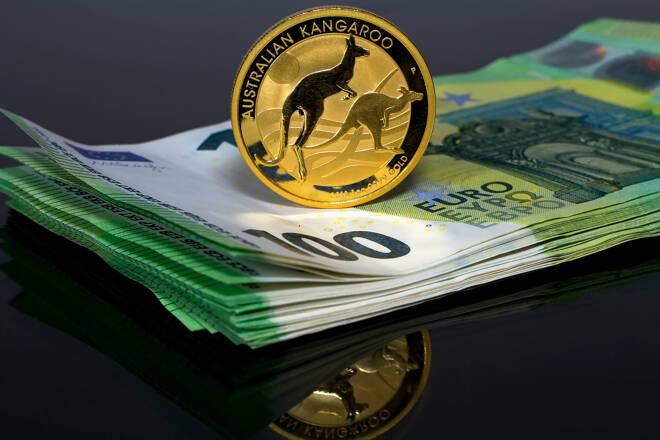Advertisement
Advertisement
AUD to USD Forecast: $0.67 in the Hands of the US Jobs Report
By:
US Jobs Report and wage growth dynamics may shape Q1 2023 Fed rate hikes, affecting AUD/USD.
Highlights
- The AUD/USD rallied 0.82% on Thursday, ending the session at $0.66020.
- US jobless claims contributed to the Thursday session gains.
- On Friday, the US Jobs Report will be the focal point.
Thursday Overview of the AUD/USD
The AUD/USD rallied 0.82% on Thursday. After a 0.05% loss on Wednesday, the Aussie dollar ended the Thursday session at $0.66020. The Australian dollar fell to a low of $0.65253 before rising to a high of $0.66201.
RBA and Financial Stability
On Friday, the RBA will be in the spotlight. Andrea Brischetto, Head of the Financial Stability department, is on the calendar to speak. References to the likely effect of interest rate hikes on households and banks would garner interest. Concerns about financial stability could lead to tighter credit conditions, impacting consumer spending and the Australian economy.
Australian private consumption contributes over 50% to the economy. However, a softer spending outlook would allow the RBA to take a less hawkish rate path. A pullback in consumer spending would dampen demand-driven inflationary pressures.
US Jobs Report in the Spotlight
Later in the Friday session, the all-important US Jobs Report and consumer sentiment will be in focus. Softer wage growth and an unexpected rise in unemployment could cement bets on a Q1 2023 Fed rate hike.
A deteriorating labor market and weaker wage growth could impact consumer confidence and disposable income. A downward trend in disposable income would affect consumer spending and dampen demand-driven inflation. A softer inflation environment would allow the Fed to take a less hawkish rate trajectory.
Economists forecast the US unemployment rate to remain unchanged at 3.9%. However, economists expect average hourly earnings to rise by 0.3% in November vs. 0.2% in October.
Consumer sentiment figures also need consideration. An uptick in consumer confidence could signal a positive consumer spending outlook. A pickup in spending could fuel demand-driven inflationary pressures and influence bets on a Q1 2024 Fed rate cut.
Economists forecast the Michigan Consumer Sentiment Index to increase from 61.3 to 62.0 in December. Investors must look beyond the headline number. Inflation expectations will also move the dial.
Short-Term Forecast
Near-term trends for the AUD/USD will depend on the US Jobs Report and China. Hotter-than-expected US wage growth and steady unemployment could impact bets on a Fed rate cut. However, stimulus measures from Beijing would be a boon for the Aussie dollar.
AUD/USD Price Action
Daily Chart
The AUD/USD held above the 50-day and 200-day EMAs, sending bullish price signals.
A break above the $0.66162 resistance level would support a move toward the $0.67 handle.
The RBA and the US economic calendar will be the focal points.
However, a drop below the 200-day EMA and trend line would give the bears a run at the 50-day EMA and the $0.64900 support level. Buying pressure could intensify at $0.65. The 200-day EMA is confluent with the trend line.
A 14-period Daily RSI reading of 57.14 suggests an AUD/USD return to the $0.66500 handle before entering overbought territory (typically above 70 on the RSI scale).
4-Hourly Chart
The AUD/USD held above the 50-day and 200-day EMAs, reaffirming bullish price signals.
An AUD/USD move through the $0.66162 resistance level would give the bulls a run at the $0.67 handle.
However, a break below the 50-day EMA would bring the trend line and the 200-day EMA into view.
The 14-period 4-Hourly RSI at 52.62 suggests an AUD/USD move through the $0.66500 handle before entering overbought territory.
About the Author
Bob Masonauthor
With over 28 years of experience in the financial industry, Bob has worked with various global rating agencies and multinational banks. Currently he is covering currencies, commodities, alternative asset classes and global equities, focusing mostly on European and Asian markets.
Advertisement
